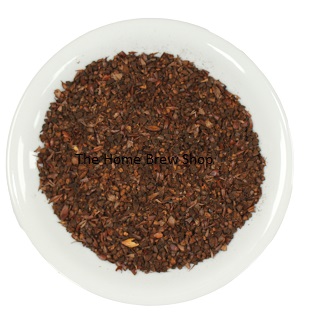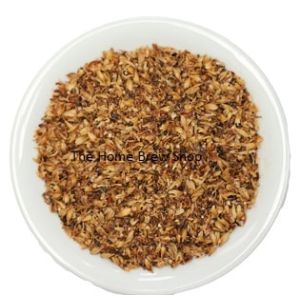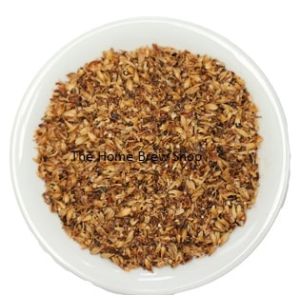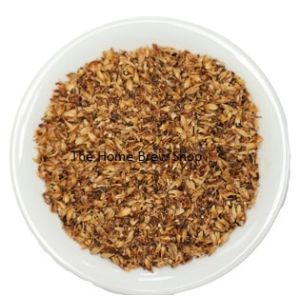Coloured Malts
Crystal, Brown, Amber, Chocolate, etc

- 25kg Crushed Crystal Malt | Simpsons malt£42.00 £35.00
-
- Crystal Malt 1kg Milled | Simpsons Malt£2.64 £2.20
- Crystal Malt 500g Milled | Simpsons Malt£1.62 £1.35
- Extra Dark Crystal Crushed 1kg£2.76 £2.30
- Light Crystal Malt 500g Crushed | Simpsons Malt£1.38 £1.15
- Dark Crystal Malt 500g Milled£1.38 £1.15
- Heritage Crystal 1kg Crushed | Simpsons Malt£2.40 £2.00
-
- Amber Malt 3kg Crushed | Simpsons Malt£6.48 £5.40
- Amber Malt 500g Milled | Simpsons Malt£1.50 £1.25
- Chocolate Malt 3kg Crushed£6.00 £5.00
- Low Colour Chocolate Malt 3kg Crushed£7.92 £6.60
- Chocolate Malt 500g Crushed£1.50 £1.25
- Low Colour Chocolate Malt 1kg Crushed£3.06 £2.55
- Roasted Barley 3kg Crushed / Milled£7.50 £6.25
- Roasted Barley 500g Crushed / Milled£1.80 £1.50
- Black Malt 3kg Crushed / Milled£7.50 £6.25
- Black Malt 500g Crushed / Milled£1.80 £1.50
- Brown Malt 500g Crushed£1.80 £1.50
-
Types of Coloured Malts
Coloured malts are used in the brewing process to add flavour, aroma, and colour to beer. They are created by roasting malted barley or other grains, which caramelizes the sugars and produces a range of colours and flavours. There are several types of coloured malts available, each with their own unique characteristics.
Light Coloured Malts
Light coloured malts are roasted at low temperatures for a short period of time, resulting in a pale colour and a mild caramel flavour. These malts are commonly used in pale ales, lagers, and other light-coloured beers. Some examples of light coloured malts include Pilsner malt, Vienna malt, and Munich malt.
Medium Coloured Malts
Medium coloured malts are roasted at slightly higher temperatures, giving them a deeper colour and a more pronounced caramel flavour. These malts are often used in amber ales, brown ales, and other darker beers. Some examples of medium coloured malts include Pale Ale malt, Maris Otter malt, and Biscuit malt.
Dark Coloured Malts
Dark coloured malts are roasted at high temperatures for a longer period of time, resulting in a dark colour and a strong, roasted flavour. These malts are commonly used in stouts, porters, and other dark beers. Some examples of dark coloured malts include Chocolate malt, Black Patent malt, and Roasted Barley.
Speciality Malts
Speciality malts are created by roasting grains with unique characteristics, such as wheat, rye, or oats. These malts add a unique flavour and texture to beer and are often used in seasonal or specialty brews. Some examples of speciality malts include Wheat malt, Rye malt, and Oat malt.
In conclusion, coloured malts are an essential ingredient in the brewing process, providing flavour, aroma, and colour to beer. Whether you're brewing a light, medium, or dark beer, there's a coloured malt that's perfect for your recipe. So, experiment with different types of coloured malts and create your own unique brews!
How Coloured Malts are Made
Coloured malts play an essential role in the brewing industry, adding both flavour and colour to beer. But how are they made?
There are two main methods of producing coloured malts: kilning and roasting. Kilning involves heating the malted barley to a specific temperature to achieve a desired colour and flavour profile. Roasting, on the other hand, involves subjecting the malt to higher temperatures for a longer period, resulting in a deeper colour and more intense flavour.
In kilning, the malted barley is spread out on a perforated floor and heated with hot air. The temperature is gradually increased, and the moisture content of the malt is carefully controlled to prevent scorching. As the malt dries, it takes on a golden colour and develops a toasty flavour. Kilning can produce a range of colours, from pale straw to amber and even light brown.
Roasting involves a similar process, but with higher temperatures and longer heating times. The malt is often tumbled or stirred to ensure even roasting and prevent scorching. Roasted malts can range in colour from deep red to black and are often used in stouts and porters. The longer roasting time also imparts a stronger flavour, with notes of dark chocolate, coffee, and caramel.
The type of malt used in brewing can have a significant impact on the final flavour and colour of the beer. Coloured malts are often used in small quantities to add complexity and depth to the brew. They can be blended with other malts to achieve a desired colour and flavour profile.
In conclusion, coloured malts are an essential ingredient in the brewing process, providing both flavour and colour to the final product. The process of kilning and roasting allows for a range of colours and flavours to be achieved, from pale straw to deep black. Brewers can use a variety of malts to create unique and complex beers, with each type of malt contributing to the overall flavour and character of the brew.













